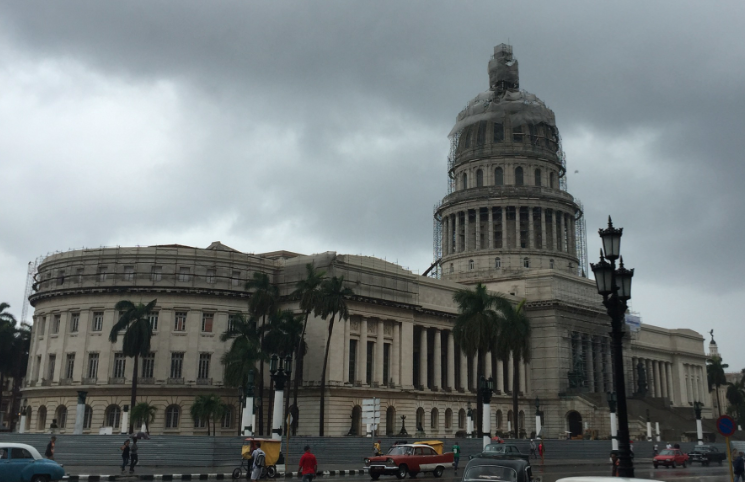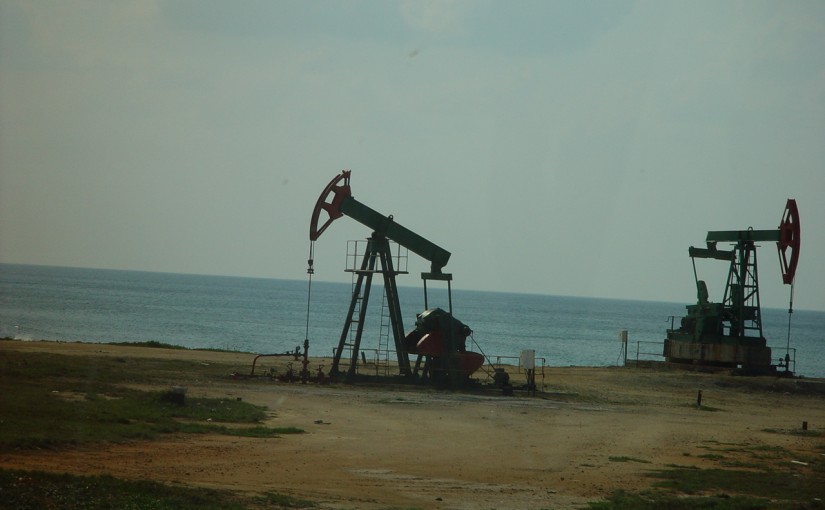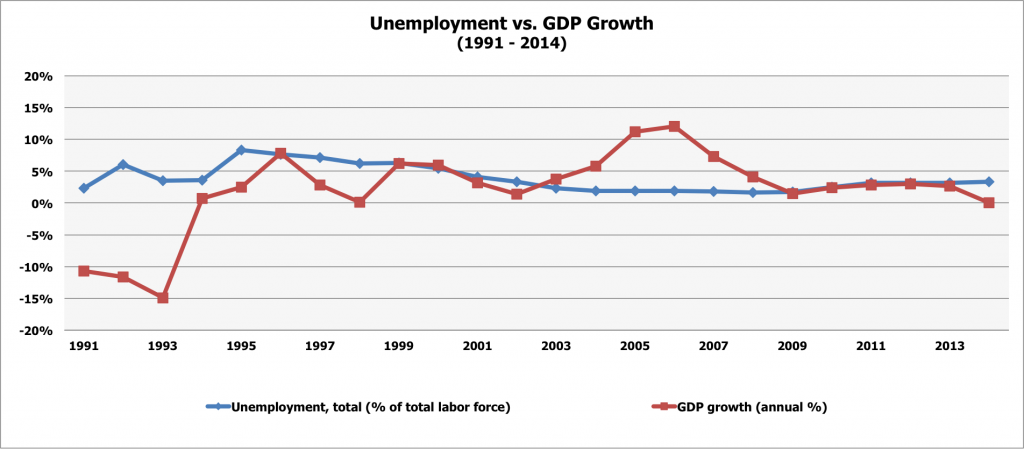Fast Facts:
– Cuba is in a slightly expansionary state. Real GDP and wages have been gradually increasing, while unemployment has been steadily decreasing.
– Expansion could continue to grow and turn into a boom if productivity levels, trade and diplomatic relations, and emigration issues continue to improve.
– Cuba has been adjusting its monetary and fiscal policies to increase its cash balance and government spending in order to fuel growth.
– Very limited information is available about interest rates within Cuba.
Overview of Business Cycles:
Business cycles oscillate as a normal part of every country’s economy. They affect businesses in many ways, including the level of difficulty associated with securing a job, hiring skilled workers, obtaining loans, selling your products, etc. There are four key business cycles: recessions, depressions, expansions, and booms. A recession includes declining real GDP, falling incomes, and rising unemployment, while a depression is a severe recession. An expansion includes rising real GDP, increasing incomes, and a decrease in unemployment, while a boom is a rapid expansion. In Cuba, the government does not publish a substantial amount of information about the state of the nation’s economy, so we must infer how well the economy is doing by analyzing the three factors outlined above (real GDP, incomes, and unemployment levels).
Cuba in Expansion:
Over the last 20 years, Cuba has seen an increase in real GDP, from -15% in 1993 to 2.7% in 2013. Simultaneously, the unemployment rate has decreased, first hitting a peak of 8.3% in 1995 and decreasing to 3.2% in 2013. Finally, over the 10 years, wages rose by 50%. The graph below shows the GDP growth vs. unemployment over the past 20 years, highlighting the trend. Please see our “Employment & Wages” page for an in depth analysis on wages. By examining these trends over the years, we can see that Cuba is experience an expansion because its economy is expanding.
The Government & Business Cycles:
The Cuban government has three options that it can use to affect the nation’s economy:
 1. Use monetary policy
1. Use monetary policy
2. Use fiscal policy
3. Simply do nothing
Being a communist country, one might think that Cuba has done nothing over the years; however, it has been slowly playing around with its monetary and fiscal policies to spur economic growth. Over the years, the government has been increasing the M1 money supply, most recently increasing the cash balance from $965 million in 2014 to $1.3 billion in 2015. Interest rate trends are not available, but according to the Central Bank of Cuba, the deposit interest rates have remained unchanged since 2011, staying relatively low and topping out at 4% for a 3-year deposit. The Cuban government has also been tweaking its fiscal policy with government spending. Currently, government spending is 33% of GDP, which is second highest to consumer spending. An influx of government spending will continue to positively affect the economy and support expansion.
Sources:
The CIA World Factbook
The World Bank – World Development Indicators
Banco Central de Cuba

